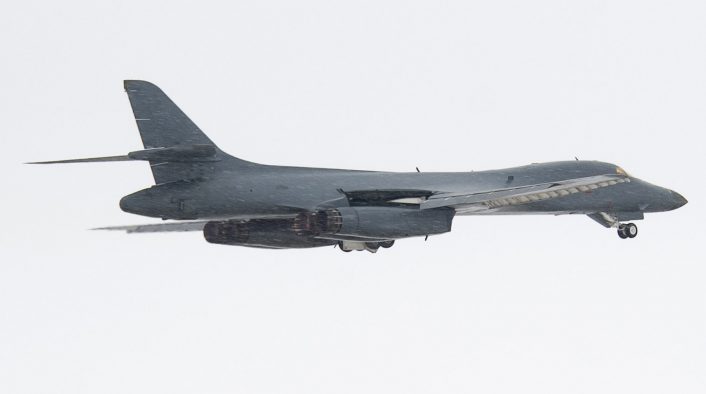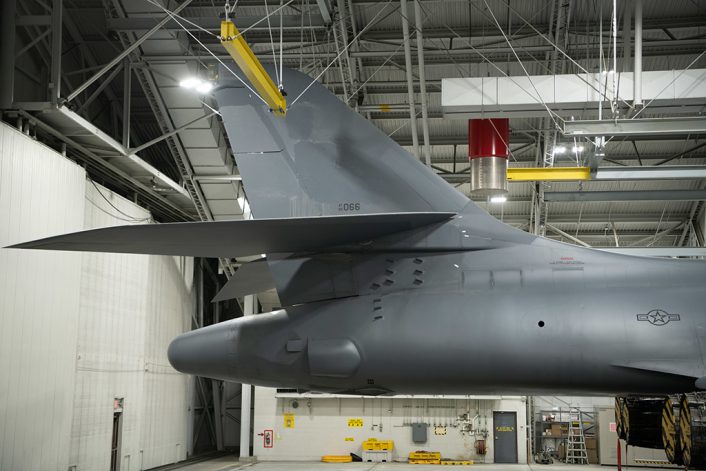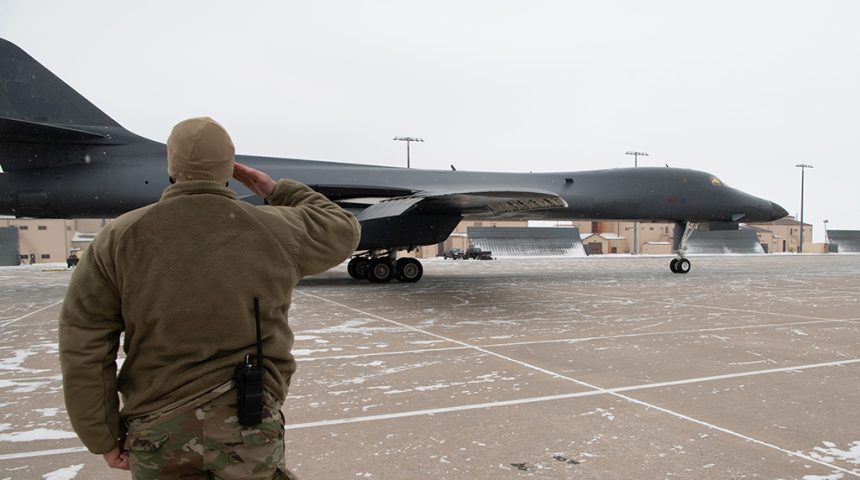The first B-1 “BONE” bomber has flown to the Boneyard.
The U.S. Air Force has kicked off the divestment of the B-1 Lancer fleet on Feb. 17, 2021. The first “BONE” (from “B-One”, as the aircraft is unofficially nicknamed) flew from Ellsworth Air Force Base, to Davis-Monthan Air Force Base, Arizona, to be retired at the “Boneyard” of the 309th AMARG (Aerospace Maintenance and Regeneration Group).

The plan is to divest 17 B-1B aircraft from the current fleet of 62 Lancers, leaving 45 in the active fleet in accordance with the National Defense Authorization Act. According to the U.S. Air Force, of the 17 B-1 aircraft, four will be required to remain in a reclaimable condition that is consistent with Type 2000 recallable storage: in other words, they can be resurrected (as for instance done with the B-52s) when needed.
Most of the bombers will be retired this year: 14 before Sept. 30, 2021.
JUST IN: The first B-1 Lancer bomber has been retired, according to @AFGlobalStrike. The B-1 spotted flying over Arizona today? Destined for the aircraft boneyard at Davis Monthan AFB.
It’s the first of 14 B-1 retirements slated for this year – all before September 30.
— Oriana Pawlyk (@Oriana0214) February 18, 2021
The divestment will allow the U.S. Air Force to focus maintenance and depot-level manpower on the remaining aircraft, increasing readiness and paving the way for the bomber fleet modernization and the introduction of the B-21 Raider.
“Beginning to retire legacy bombers, to make way for the B-21 Raider, is something we have been working toward for some time,” said Gen. Tim Ray, Air Force Global Strike Command commander in a public release. “Due to the wear and tear placed on the B-1 fleet over the past two decades, maintaining these bombers would cost 10s of millions of dollars per aircraft to get back to status quo. And that’s just to fix the problems we know about. We’re just accelerating planned retirements.”
Anyone lucky enough to spot the B-1 Bombers coming and going from @DMAFB today? John Holly DeLalla snapped this picture as one of them was on final approach. Thanks for sharing John. #Tucson #military #USAF #B1Bomber pic.twitter.com/tgOlNBajiq
— Dan Marries (@DanMarriesKOLD) February 17, 2021
Assessments conducted on the fleet found that the 17 B-1Bs had experienced significant structural fatigue with cracks appearing in highly stressed
structural components joining the wings to the fuselage. Ten to 30 million dollars per aircraft would be required to bring the aircraft back to the status quo.
“Retiring aircraft with the least amount of usable life allows us to prioritize the health of the fleet and crew training,” Ray said. “Our ability to balance these priorities will make us more capable and lethal overall.”










